Curbside Classic: 1946 Lincoln Continental – The Most Imitated American Car Ever

This car is a jaw-dropper, a true classic, and a lucky find that rivals the CC logomobile, but it’s misnamed. By all rights, it should be the Edsel American. It was Edsel Ford’s fine taste and encouragement that made the original version of this trend-setting car happen, and in the process created a car that set the template that every American personal luxury coupe/convertible has been trying to measure up to ever since. An aggressive face on a very long hood, a close-coupled body, a short rear deck, and dripping with the aura of exclusivity and sex: a timeless formula. All too few of the endless imitators got the ingredients right, or even close, as our recent Cougar CC so painfully showed. But that didn’t stopped them from trying, just like I never stopped looking for this Continental after I first saw it almost two years ago. It was well worth the effort.
Since the original Continental has a lot of history attached to it, we’re going to step back a bit and put in into context. A more comprehensive background can be found in my Lincoln History Up to 1961, but here’s the semi-condensed version: Unlike his father, Edsel Ford had a very artistic side and was a lover of fine cars. Travel to Europe exposed him to the latest styling trends, and his oversight of Lincoln during the classic era resulted in superbly designed cars.
The Depression essentially ended the era of these expensive toys and also ushered in the aerodynamic era. This resulted in a radical re-thinking of the automotive configuration, with pushed-forward passenger compartments, small pointy hoods and long tapering bodies, sometimes with rear engines. Lincoln adopted John Tjaarda’s radical rear-engined concept, but toned it down and adapted it to use main-stream Ford mechanicals. The resulting 1936 Zephyr (above) was quite successful, because unlike the similarly advanced Chrysler Airflow, it kept at least some semblance of a traditional pointed hood, even if shorter in proportion to the rest of the car than its predecessors.
For sedans, this re-arranging of the automotive real estate was eminently logical for the roomier interiors that resulted. But it really wasn’t so suitable for coupes and convertibles. As handsome as this ’37 Zephyr coupe is, it lacks the raw visceral appeal that the long-hood classic-era cars exuded so powerfully.
Now there were perks along with the endless pains of being Henry Ford’s (only) son. Edsel had commissioned a number of one-off “Specials” and customs since he was sixteen, including three sporty cars that represented his vision of sophistication and latest European trends. All three of them were thus dubbed “Continental”. He came up with the basic concept and certain details of these cars, and handed them over to Bob Gregoire to make the renderings that resulted in the hand-made final results.
In late 1938, Gregoire drafted the latest of the series (he claimed in thirty-five minutes) with input from Edsel, and the resulting car was shipped the following March to its happy new owner in Florida, where the Fords spent much of the winter. The 1939 Continental was built on the Zephyr chassis, but the passenger compartment was now well set back (again) resulting in that long hood, and the whole body was lowered and the side-boards completely eliminated (sectioned and channeled). It was a superb reconciliation of the traditional with the streamlined trends, and an instant classic. And the exposed spare on the rear quickly became known as the Continental Spare, an affectation that still haunts us today.
Ironically, our featured car lacks the eponymous spare, and its owner may even go so far as to customize the rear end to eliminate any lingering clues to its disappearance. Now that’s a gutsy move, and one I can respect. A Lincoln American indeed, if not an Edsel.
Edsel was bombarded with open check books as he drove his new toy around Palm Beach (one per mile, he claimed), so he called back to Dearborn and ordered the Continental to go into production. As it was essentially a hand built car, only some four hundred were produced in 1940. The first one was given to Mickey Rooney, which quickly had the rest of Hollywood fighting to be seen in one. Like most successful halo cars, its impact was way beyond the sheer revenue numbers.
After a brief two-year run, the Continental hibernated through the war, and re-emerged in 1946 with a drastically re-styled front end. I will admit to generally preferring the original’s more delicate prow, but ironically perhaps, the ’46-’48 Continental’s much heavier and bolder front end actually completes the enduring formula that would be copied so prolifically.
The restyle is also the equivalent of a sex change operation: the original is a delicate, graceful and feminine car, none of which comes to mind when confronted with this butch bomb. So strictly speaking, the Continental was aptly named for its first edition, but what reappeared after the war was utterly all-American. Understandably so, since the swagger in America’s psyche after WWII was all-too obvious.
Perhaps that also helps explain why the ’46 Conti has been the object of endless replication; it so utterly embodies the self-confidence and all-time high national testosterone levels that winning the biggest war ever induced. No wonder there was such a huge Baby Boom. And no wonder older guys were the primary target for its off-shoots. And (again) no wonder that the peak years for the personal luxury coupe market was during the seventies and eighties. Our war heroes were hitting middle age, and Viagra hadn’t been invented yet. But instead of buying a Mark IV, they should have gone out an hunted up the real thing instead, because this car is guaranteed to get your sperm count up.
I say this from experience (no, not my own). In 1973, I had an evil landlord in Iowa City. Henry Black was his name, and he would trade rent for slave labor from his starving student tenants during the summer to build additions and whole houses to his ramshackle slum called Black’s Gaslight Village. He was a big, heavy-set ornery old cuss, and walked with a cane (which he also treated as a weapon), and must have been well into his seventies. And he kept a quite young and attractive wife under virtual-house arrest in his big old Victorian. We only ever got peeps of her through the front door when we paid the rent; he never let her go anywhere, especially in his only car, a mean black ’46-’48 Continental coupe just like this one. Maybe he was worried about all the young male students. It was all like some Gothic novel.
I worked for him one summer building a cottage for future student tenants out of old railroad ties, creosote smell and all (this was before students financed their lifestyle, spring breaks in Mexico and summers in Africa with endless student loans). It was also before building permits were mandatory. Anyway, I vividly remember riding with him in his musty old Continental to the hardware store, where he’d wait outside. Being twenty at the time, it was a bit hard to imagine, but old Henry Black was still fathering little kids with his locked away bride (unless students were sneaking in). The kids actually got to come out once in a while.
If I’ve digressed inappropriately (again), sorry; but the memories of hearing the flathead V12 in Henry’s car cough to life and his ivory-handled cane sliding against me in the curves are irrepressible after being exposed to this beast today. But if you’re wondering why there’s no engine shots, it’s because the troublesome Zephyr V12 is long gone; a healthy sounding Chevy small block does the burbling instead. And it may well not be the first transplanted engine either; the twelve had such a bad rep folks were tearing them out back in the late forties already and replacing it with the flathead Lincoln V8 that succeeded it.
The Zephyr was not an expensive car, so Ford had his engineers cobble up a budget twelve that was not much more than the Ford V8 and a half. But undersized water passages exacerbated the flathead’s intrinsic thermal issues, and as a result bores warped, rings wore out, oil burned and didn’t get properly circulated for other reasons as well. It only made some 120 hp from its 292 cubes, so performance was none too impressive in the 4,000 lb Continental, even when it ran properly. Admittedly, the post war engines had many of their ailments fixed, but the bad rep stuck.
I first ran into this car on the street a year and a half ago, and almost had an accident (in my pants). It’s not like I was expecting to find an original Continental at all, but then this comes burbling down the street. I caught up to the driver at a light, but he was in too much of a hurry to stop for photos. And I’ve been lusting for it ever since. Well, good things sometimes happens to those that lust hard enough, and I finally caught up with it again on a rare sunny December day here. Drew, its owner, bought it a couple of years back, and is still mulling over its future. A chopped top maybe?
Or maybe not; Drew is tall like me, and the Conti is none too roomy already. This is definitely a “personal” coupe, and not nearly as big, at least on the inside, as one might expect. But whatever direction he takes it, I’m sure it will serve him well, even into old age, should he feel the desire or need to keep it that long.

More by Paul Niedermeyer
Latest Car Reviews
Read moreLatest Product Reviews
Read moreRecent Comments
- Jalop1991 There is no inflation. Everything is cheaper than it was 5 years ago. SHRIMP AND GRITS!
- ChristianWimmer Exterior and interior look pretty flawless for such a high mileage car. To me this is an indication that it was well-maintained and driven responsibly. It’s not my cup of tea but it’s bound to find an enthusiastic owner out there.And with ANY car, always budget for maintenance.
- Fred I'm a fan and watch every race. I've missed a few of the live races, but ESPN repeats them during more reasonable hours.
- Mikesixes It has potential benefits, but it has potential risks, too. It has inevitable costs, both in the price of the car and in future maintenance. Cars with ABS and airbags have cost me at least 2000 bucks in repairs, and have never saved me from any accidents. I'd rather these features were optional, and let the insurance companies figure out whether they do any good or not, and adjust their rates accordingly.
- Daniel Bridger Bidenomics working.































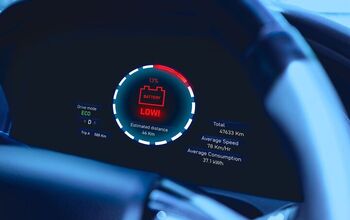
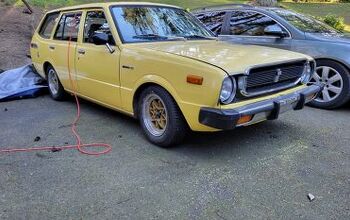
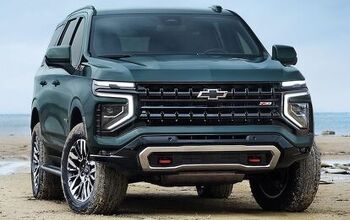
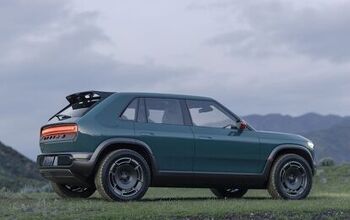


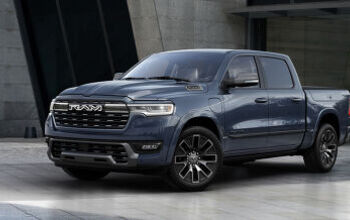
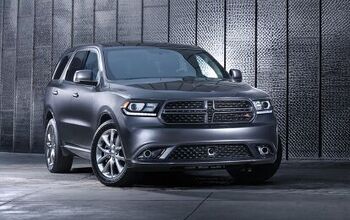
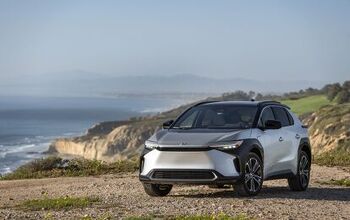

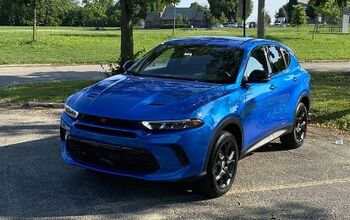

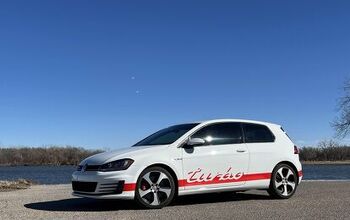


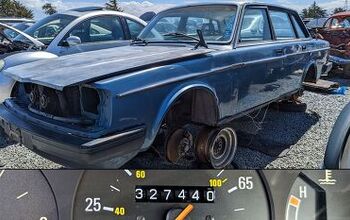
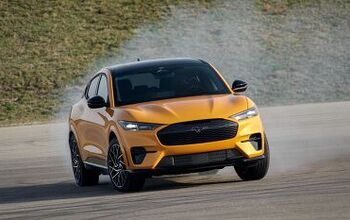

Comments
Join the conversation
Great writing Paul. Thanks for the details. This baby may not be the most attractive of the 40s Lincolns but ugly? . . . that's crazy talk!
It's hideous.
Heavy handed front grill.
A mid section that has zero relation to the rest of the car.
And the hardware on the trunk lid looks like Home Depot rejects.
A rear bumper that's too narrow for the car.
Exposed door hinges.
Poorly handled rear side window treatment.
And underneath it's buggy springs and solid axles.